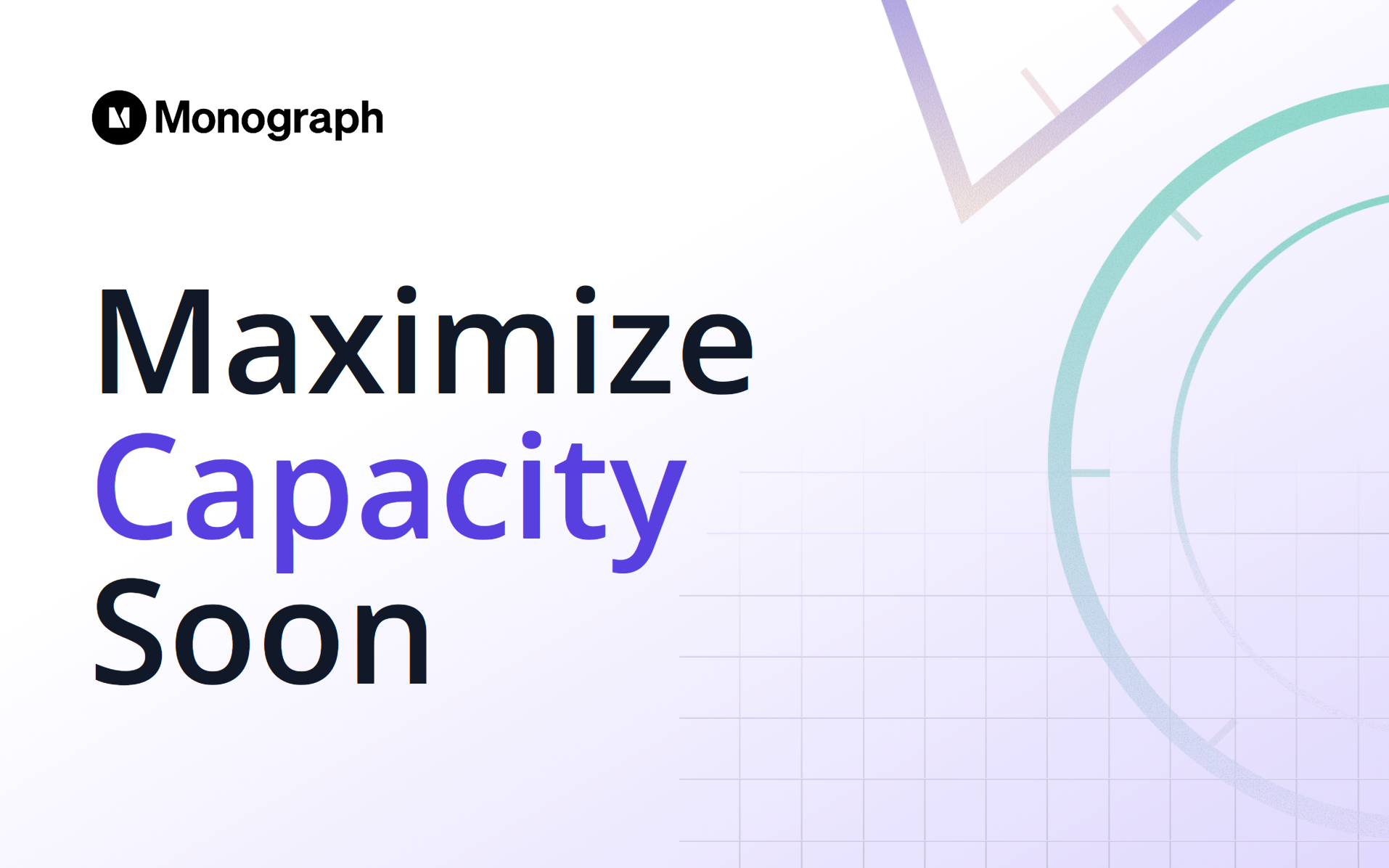Contents
Picture your studio running at 82.4% utilization: the current industry average for architecture firms, while the top quartile operates closer to 95.2% and pockets the difference in pure profit. That gap isn't just a number; it's the cash you need for new hires, better software, or fewer sleepless nights.
Capacity utilization tracks how much of your firm's available output you actually put to work. It's the ratio of billable hours (or finished deliverables) to the total hours your team could have billed if every minute were perfectly productive, expressed as a percentage. Birdview PSA breaks this down clearly, showing the formula that keeps you honest: Actual Output ÷ Maximum Possible Output × 100.
This metric moves three essentials at once: revenue, cost efficiency, and profit margin. When you hit the sweet spot of 80–90%, you cover overhead, keep projects profitable, and still leave breathing room for design development, technical reviews, and necessary coordination. Dip below that band and idle talent drains cash; push past it for long and burnout destroys quality, morale, and retention.
What follows is a field-tested process, used by firms from boutique studios to 200-person engineering outfits, to calculate, interpret, and act on your capacity numbers. This framework turns a single metric into clearer staffing plans, steadier delivery, and a healthier bottom line.
Formula & 4-Step Cheat Sheet (Start Here)
Capacity utilization measures how much of your firm's available output you're actually using. It tells you whether the hours, equipment, and brainpower you're already paying for are turning into billable work or sitting idle. The calculation is straightforward: Capacity Utilization = (Actual Output ÷ Maximum Possible Output) × 100.
This process breaks down into four essential steps that transform scattered data into actionable intelligence:
- Identify actual output: billable hours logged, drawing sets completed, or site inspections that generated fees during your measurement period.
- Determine maximum output: total available staff hours minus PTO, holidays, and unavoidable administrative time.
- Apply the formula: divide actual by maximum, multiply by 100 for your capacity percentage.
- Analyze and act: compare results to industry benchmarks to determine whether you need more work, better resource allocation, or additional staff.
Consider a structural engineering team: five engineers with 40 available hours each log 160 billable hours from a possible 200. That delivers 80% capacity efficiency, strong performance with breathing room for quality work.
Most A&E firms perform best between 80–90% capacity efficiency, balancing profitability with sustainable workloads. Lower rates leave revenue on the table; higher rates risk burnout and quality issues. Want to see how other firms have improved their capacity utilization? Check out these success stories from architecture and engineering practices.
Step 1 – Gather Your Actual Output Data
Before you can judge whether the team is humming or idling, you need a clear picture of what everyone actually produced last week, month, or quarter. In architecture, "output" shows up as billable design hours, completed drawing sets, or project milestones like a 50% CD package. Engineering teams track deliverables: structural analyses signed off, site inspections completed, or the billable hours tied to those tasks. Whatever work you deliver, the common thread is time that clients pay for.
You'll pull this data from several sources. Timesheets remain the backbone, with tools like Deltek or Monograph's features feeding those hours directly into your capacity calculations, while platforms such as Autodesk BIM 360 support broader project coordination and management. ERP exports add the financial layer, while project management dashboards show which milestones actually closed. Even a lean firm can start with a spreadsheet if the columns line up correctly.
Before you plug numbers into the formula, run a quick data check to ensure accuracy. Match the same time period across every data source: calendar drift ruins comparisons. Strip out rework, pro-bono, and marketing hours; they matter, but they don't count as billable output. Make sure phase codes or work breakdown structures match across systems so hours land in the right bucket.
The biggest mistake is mixing overhead with production time. Include admin meetings in "billable" and your efficiency rate climbs, but so does the illusion that everything's fine, right up until cash flow crashes. Accurate forecasting starts here too, including not just new projects but maintenance, revisions, and the learning time your team needs to stay current.
Make sure the hours are real, not estimated. Lightweight trackers like Harvest or Toggl help, but integrated tools push actual entries straight into your dashboard. This closes the gap between what was planned and what really happened, transforming your numbers from wishful thinking into a reliable compass.
Step 2 – Determine Maximum Capacity
Think of theoretical capacity as the perfectly sharp pencil: it never breaks, never needs sharpening, and sketches nonstop. Reality hits when that pencil snaps, you pause for coffee, and a client calls with revisions. The gap between ideal and everyday work is why calculating effective capacity beats relying on theoretical head-counts. Engineering teams that ignore this distinction consistently miss forecasts and blow deadlines.
Start with this equation: Number of staff × billable hours in the period × target efficiency rate. Eight architects working 40 hours next week at 85% billability gives you 272 effective hours. Schedule anything beyond that and you're setting yourself up to fail.
Why discount the remaining 15%? Non-billable work is still work. PTO, holidays, internal meetings, training, and admin typically consume 20–30% of every professional's week. Breaking it out explicitly helps you see the cost instead of feeling it in overtime.
Common non-billable time drains include paid time off and sick days, staff meetings and coordination calls, plus business development, QA, or internal R&D. Engineers also deal with equipment limits: a testing rig rated for 160 hours per month but down ten hours for calibration maxes out at 150 hours, regardless of scheduling tricks.
Monograph's capacity forecasting pulls directly from staff calendars and assignment data, showing remaining hours for every person before you overload the team. Real-time warnings beat scrambling at the last minute.
The biggest mistake is optimism. Overestimate capacity and your numbers look safe while deadlines slip. Underestimate and you hire too early, killing profit. Ground your calculations in effective capacity and you avoid both problems, making Step 3's calculations actually useful.
Step 3 – Plug In the Numbers
You've gathered the facts: now run the math. Take your actual output and divide it by maximum capacity, then multiply by 100. The classic formula works because it's simple: (Actual Output ÷ Maximum Capacity) × 100.
Last week your studio logged 1,200 billable hours against a realistic ceiling of 1,500 hours. 1,200 ÷ 1,500 = 0.80 → 80% efficiency. You're in the healthy zone.
An engineering shop might swap hours for units. Say your plant turned out 67,000 test assemblies but can push 100,000 under current staffing and equipment limits. 67,000 ÷ 100,000 = 0.67 → 67% capacity. That low number tells you capacity is sitting on the shelf: time to chase more work or trim idle costs.
Keep the periods identical when you stack results. Inconsistent windows blur trendlines and hide problems until they explode. You can crunch the figures in a two-column spreadsheet: Actual Output | Max Capacity. Copy the formula once, drag it down, and you've got a living history of performance.
Consistency is non-negotiable: same inputs, same cadence, same definition of "output." Do that, and every new number becomes a signal instead of noise.
Step 4 – Interpret & Act on the Results
You've run the numbers and landed on a percentage, but the real value comes from what you do next. Read the metric the same way you'd read structural calculations: each range tells a different story about risk and opportunity.
- Below 70% means you're leaving revenue on the table and paying salaries for idle capacity. The 2024 Benchmarks show bottom-quartile firms hovering near 71.1% efficiency, a level that puts financial strain on even well-established practices. At this stage, start hunting for additional billable work, accelerating proposals, or reassigning team members before considering temporary hours reduction. Chronic under-loading often signals misaligned forecasting rather than lack of talent; late planning or poor visibility usually sit at the root. Small firms report 25% profit growth and 50% efficiency gains when they implement better capacity planning systems.
- 70-85% is where most healthy firms live. You're generating solid margin while leaving headroom for design reviews, R&D, and the inevitable round of client "one-more-thing" requests. Treat this band as a green light but keep a weekly eye on trends to catch drift before it hurts cash flow.
- 85-90% puts you in the sweet spot that top performers target. At this level, quality control and staff well-being become non-negotiable. Tight processes, quick issue escalation, and clear scope guardrails keep high performance from tipping into chaos.
- Above 90% is survivable for a week or two during a deadline push; months at that pace guarantee mistakes and burnout. When you see this number, immediately look for bottlenecks, push back on low-value extras, and price future work to afford additional help.
Not every seat in your firm should read the same. Benchmarks place principals around 74%, project managers near 88%, and project architects/designers as high as 92%: a reflection of who spends time on business development versus billable production. Comparing apples to apples prevents unfair performance critiques and highlights where support staff or automation can relieve pressure.
Seeing trouble early matters most. Trendlines surface these shifts in real time, long before you feel them in late nights or blown budgets. A quick glance at performance data shows whether a single phase, a single person, or the entire studio is drifting out of range, so you can course-correct while options are still inexpensive.
Pro Tips & Strategies to Boost Utilization
Staying in the 80–90 percent sweet spot isn't luck: it's the result of deliberate practice management. These strategies can nudge your numbers in the right direction without grinding your team into dust.
Start by eliminating workflow waste. Look for the architectural or engineering equivalent of clutter on a job site: unnecessary meetings, duplicated drawings, redundant QA passes. Sort through your processes, standardize what works, and ditch what doesn't. This clears the path so billable hours stay billable.
Next, build flexible teams. A rigid org chart crumbles the moment a client moves a deadline. Create small project "pods" that can shift between jobs as priorities change, supported by a current skills matrix. Keeping that matrix updated avoids the common trap of task-skill mismatches that drain efficiency.
Automation handles the tedious work, since manual spreadsheet updates hide hours of unbilled admin time. Real-time visibility tools bring schedules, staff availability, and budgets into one view so you can spot an overbooked designer or an idle junior in seconds. That instant feedback fixes the "late or inadequate planning" problem that kills performance. Successful firms report saving 50% of their time on administrative tasks and achieving 2x faster billing processes after implementing integrated tools.
Forecast beyond next Friday. A rolling 12-week look-ahead lets you see demand cliffs before you drive off them. Engineering teams that blend historical data with trend analysis cut surprise overtime and maintain steady workflow.
Build in a 10–15 percent buffer for the unexpected. Unplanned RFI bursts, site visits, or bug fixes will happen; budgeting a small slice of capacity for them keeps the rest of your schedule honest.
Finally, review and re-balance every week. Efficiency isn't a set-and-forget metric; it's a pulse check. Visual dashboards make that conversation a two-minute ritual instead of a post-mortem. Keep the data current, keep the workloads humane, and your numbers take care of themselves—along with your margins.
For more insights on improving firm efficiency and profitability, explore additional resources on the Monograph blog.
Mini Case Study – Mid-Sized Engineering Firm
A 35-person civil engineering practice noticed its staff was logging barely 61% billable time, almost identical to the 61% industry median reported in the latest Deltek Clarity study. The low performance translated into missed deadlines, rising overtime, and chronically thin margins.
The leadership team used the 4-step framework to figure out where capacity was bleeding. First, they pulled six months of timesheet exports to establish actual output. Next, they set realistic maximum capacity by subtracting PTO, training, and overhead windows. The analysis revealed that senior engineers were buried in admin work while junior staff sat idle: a classic problem where skills don't match workload distribution.
The firm made three strategic changes. They built a fresh skills matrix and reassigned tasks so work matched expertise. They brought in a part-time geotechnical specialist to relieve a critical bottleneck. Finally, they scheduled 30-minute weekly capacity huddles to avoid last-minute resource scrambles.
Within one quarter, efficiency climbed into the 85% sweet spot that research ties to strong profitability. Overtime costs fell, and project delivery times improved enough to impress long-standing municipal clients. Similar results appear across many firms: 66% reductions in budget overages, 4x faster billing processes, and 50% efficiency gains are common when capacity planning becomes systematic rather than reactive.
"The simple formula showed us exactly where bandwidth was bleeding," the firm's operations manager recalls. "Once we could see the gaps, rebalancing workloads was fast—and the impact was immediate."
Today the team relies on real-time dashboards to keep performance in check, catching imbalances long before they snowball into missed deadlines or burnout.
Track Your Capacity Utilization With Monograph
You now have the four-step process: define your metrics, gather real output data, nail down realistic maximum capacity, and calculate the results. Follow these steps consistently and you'll spot staffing gaps before they derail project schedules, reduce budget surprises, and give your team the breathing room that produces better design and engineering work.
That 80-90% sweet spot keeps revenue strong without pushing people toward burnout. When performance drifts outside this range, you know exactly what to do: bring in new projects, redistribute workloads, or hire before the crunch hits.
Set a recurring reminder to check these numbers just like you review drawing sets or structural calculations. The data tells you what's coming before it becomes a crisis.
Ready to see your capacity utilization in real-time? Monograph gives you value from day one: no configuration, no consulting fees, no six-month implementations. Our MoneyGantt™ feature shows project budget vs. actual spending overlaid on project timelines, while integrated time tracking and capacity planning tools give you complete visibility into every project, team member, and phase. Start your trial and transform scattered spreadsheets into actionable intelligence from day one.
Frequently Asked Questions
What is a good capacity utilization rate for A&E firms?
The industry median utilization rate is 82.4%, with healthy firms typically operating between 80-90% overall. However, targets should vary by role and firm size. Principals often run around 74% due to business development activities, project managers average 88%, while project architects and designers can hit 92% during production phases.
How do you calculate capacity utilization for architecture and engineering firms?
Divide your team's actual billable output by their maximum possible output, then multiply by 100. For example, if your team logs 1,200 billable hours against a realistic ceiling of 1,500 hours, your capacity utilization is 80%. Track this monthly across all roles and projects to spot patterns and improvement opportunities.
What's the difference between capacity utilization and employee utilization?
Capacity utilization measures your firm's total productive output against maximum potential, while employee utilization focuses on individual billable time percentages. Capacity utilization includes equipment, space, and workflow efficiency, not just how busy people are. Both metrics matter for profitability.
How often should we measure capacity utilization?
Review capacity utilization weekly for operational adjustments and monthly for strategic planning. Weekly checks help you catch resource imbalances before they become crises. Monthly analysis reveals trends that inform hiring decisions, project scheduling, and capacity planning for the next quarter.
What causes low capacity utilization in A&E firms?
Common causes include poor project forecasting, skills mismatches between staff and work requirements, administrative bottlenecks, and idle time between projects. The biggest culprit is usually inadequate capacity planning: scheduling work without considering realistic team availability and non-billable time requirements. However, industry data shows that firms addressing these issues systematically achieve 50% time savings on admin work and 25% profit growth within their first year.





